May 29, 2025 | 20:52 GMT +7
May 29, 2025 | 20:52 GMT +7
Hotline: 0913.378.918
May 29, 2025 | 20:52 GMT +7
Hotline: 0913.378.918
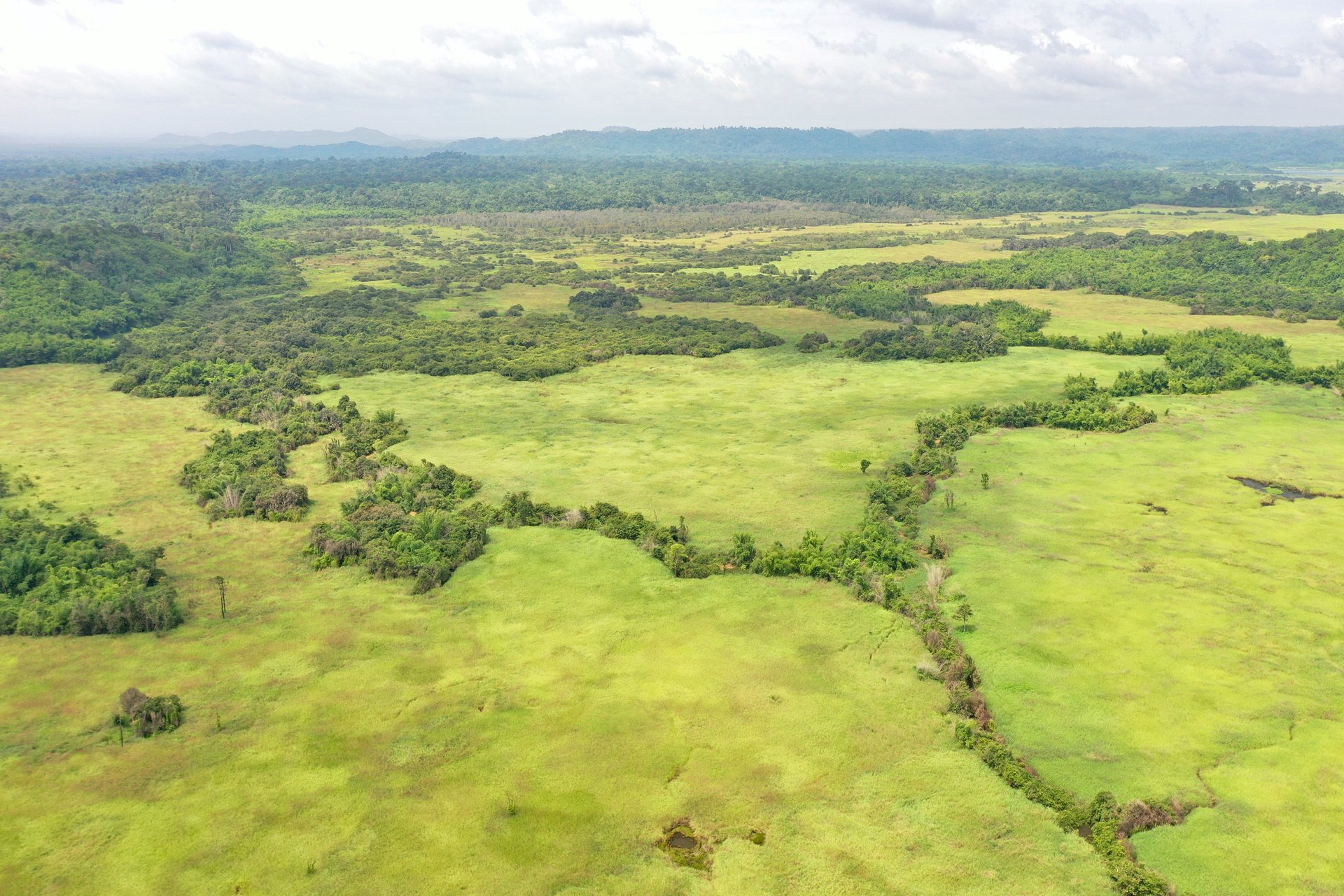
The vast grasslands in Cat Tien National Park are a favorable habitat for gaurs. Photo: Tung Dinh.
Cat Tien National Park is said to be the “animal district” of Southeast Vietnam, known for its high biodiversity. With over 70,000 hectares of primeval forest nurtured by the Dong Nai River, this place is a favorable habitat for hundreds of animal species, including large mammals such as gaur, elephant and bear, 30 of which are in the Red List.
Cat Tien offers fantastic opportunities to observe wild animals, trademarked by a popular program: animal watching at night. Indeed, some people consider this experience the most crucial part which fulfills their journey to Cat Tien.
In the dry season, the trees are sparse, and the animals are easily visible. But in the rainy season, animal watching depends on many factors, especially luck. Since plants and water are readily available, animals do not need to search for food at night.
The nocturnal animal-watching tour starts from a garden wharf, tracing the Dong Nai River southwestward. This route ensures the best experience since animals often search for water sources.
“Let’s leave at 18:45 to increase our chance of encountering wild animals,” says Mr. Le Duc Khanh, an officer of the Center for Education, Environment and Service in the forest. However, it rains as soon as Khanh finishes his sentence – it is always unexpected in the rainy season. The plan is temporarily adjourned.
At 19:15, the first group of guests finally boards the specialized vehicle to the inner forest. Blue and red lights flicker between the vehicle and people’s paper raincoats in the dark.
After the guests settle into their seats, Khanh disseminates some critical information. He is the zoologist-in-charge for today who will project light on the animal for the tourists to watch.
Firstly, the phone’s flash is strictly forbidden since its white light can intimidate the animals. Meanwhile, the car’s specialized light is yellow and fine-tuned so as not to frighten the animal.
Secondly, tourists must keep silent when encountering an animal and not be overly excited. Otherwise, the animal will startle and run away.
The car heads straight into the quiet darkness. The engine and the rain echo the frogs’ calling from afar.
500 meters into the wild, Khanh spans a headlight across the landscape and then quickly projects it on the road’s side to avoid spreading it widely.
He does it four times until two red dots appear in the grove, about 20 meters from the car. “Animals!” – some tourists blurt out. Immediately Khanh signaled everyone to remain calm and observe with patience.
At night, a small deer rests in the lightened V-shaped area projected from the car. After a few seconds of bewilderment, the deer crouches as if eating something, then slowly walks into the grove.
Khanh knocks twice on the cabin’s back door to signal the driver to continue moving (a single knock means to stop the car). These familiar hand movements repeat until deers, gills, iguanas, and other animals appear in Khanh’s headlight.
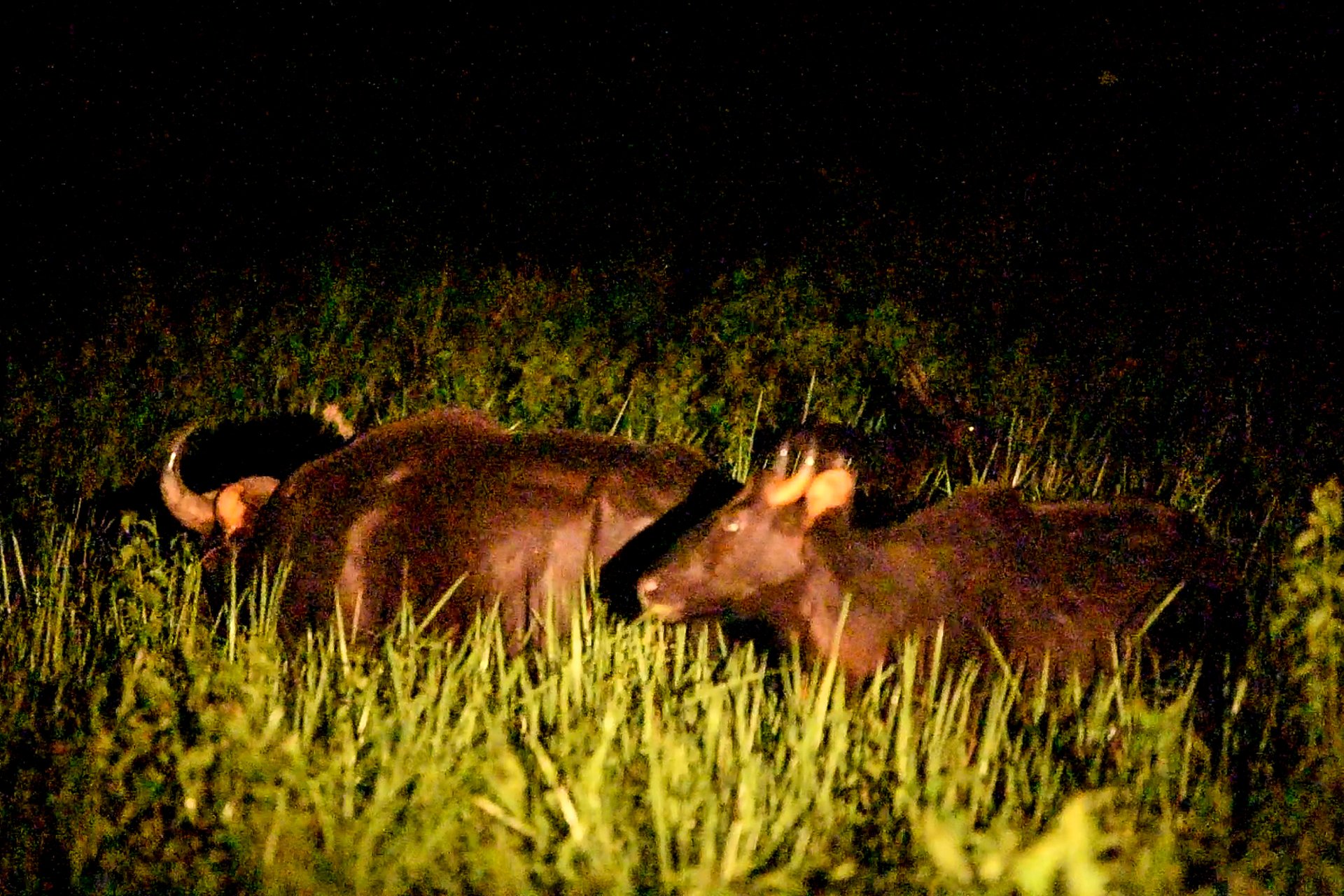
Gaurs appear in Khanh's during the nocturnal animal-watching tour. Photo: Tung Dinh.
When the tourists seem satisfied with animal-watching, Khanh says softly: “That’s the gaur.” The group immediately turns their eyes toward the light without any questions. First, they see dozens of red dots. Gradually, the massive dark shades and mighty horns become visible.
The gaurs are the second-rarest species in Cat Tien National Park, only after wild elephants. They are susceptible to people as well as the weather, so the probability of encountering gaurs is only about 20%.
Khanh’s colleagues retell that an old tourist, over 60 years old, came to Cat Tien a dozen times just to see guars in the wild. He eventually had to give up when his health no longer allowed him to do it.
This tourist group is fortunate to not only encounter the gaurs but also immerse in the night rain. Occasionally, lightning cuts the sky, revealing the gaurs in nocturnal rain.
According to the tour guides of nocturnal animal-watching, the first thing to detect animals is their eyes reflecting light.
For an experienced person like Khanh, distinguishing a gaur from other animals is also based on their eyes, precisely the distance between the two eyes of the animal.
“The distance between the eyes of a gaur is much larger than that of deer and other mammals. Therefore experienced people can distinguish them with only a blink of an eye,” Khanh added.
Nocturnal wildlife watching is a lot of fun. But sometimes a lucky wandering cyclist can also see wild animals in the park, including gaurs or wild elephants.
The large grasslands in the park are the gaurs’ favorite spots, especially those with shades, blocking away sunshine and raindrops. Sometimes cyclists wandering through these grasslands are struck by the smell of gaurs in the air – a powerful, bold and characteristic odor.
Following that odor, one can see dozens of guars eating grass. One can conveniently stand watching them for a long time or record them freely without fear of them leaving.
If a person stands at the wind’s end, the gaurs cannot feel the human’s breath and stay still. Also depending on the wind, photography enthusiasts can use drones to capture the cows from above without them knowing because the wind disperses the propeller’s sound in another direction.
In contrast, if the watcher stands at the wind’s flow, the gaurs can quickly detect them and run away. Or when the storm comes, the change in the air can also make the cows feel unsafe, and they soon move away from the vast grasslands to hide under big old trees’ foliage.
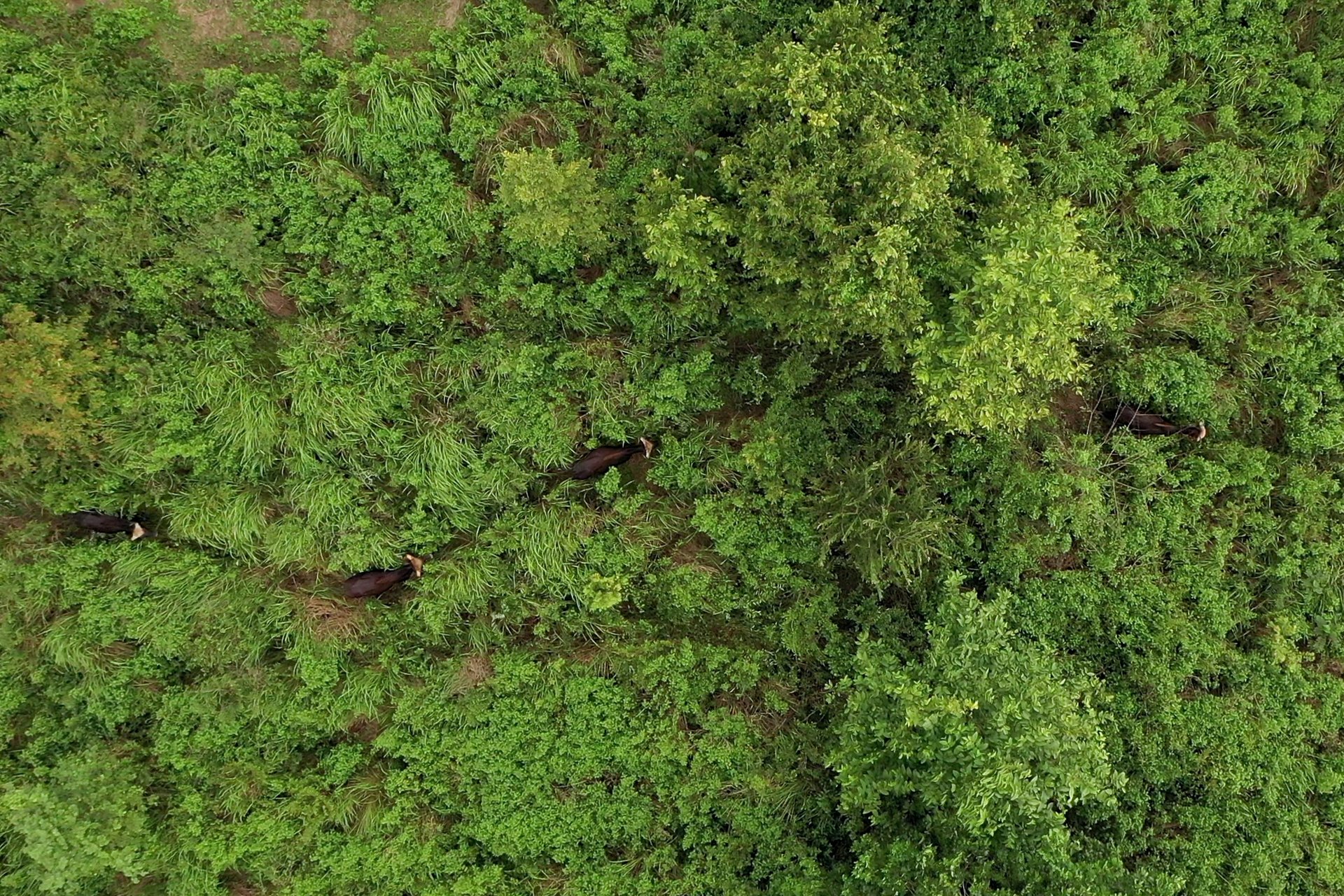
The gaurs follow one another from the wide grasslands into the old forest when they encounter an afternoon storm. Photo: Tung Dinh.
Guars are rare, but the rate of encountering wild elephants in Cat Tien is even lower. According to forest rangers and park officials, sometimes they do not catch sight of elephants for a few months. But randomly, while on patrol, they see an elephant leisurely walking on the trail.
Although elephants in Cat Tien are wild animals, a male elephant is friendly with humans. It is the only elephant that occasionally wanders on the tourist trails. However, it only visits this area once or twice each year, enough to check on the people and then leave. The rangers jokingly say that perhaps this elephant is “on patrol” to see if the park has any changes.
From the residential area, one has to cross the Dong Nai River via a ferry or boat to enter Cat Tien National Park. While waiting for the people to arrive, the ferryman Thanh excitedly shows tourists the video he took of wild elephants.
Under the dense foliage, the male elephant seemed to occupy the entire path, leisurely wagging his tail. Mr. Thanh says, on the day he dropped off guests at Bau Sau, he saw this elephant only a kilometer away. It was in November 2022.
Translated by Quynh Chi
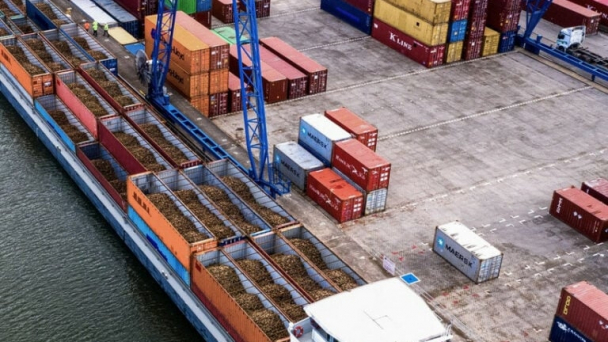
(VAN) The mutual export of agrifood products between the European Union (EU) and the United Kingdom (UK) must occur again without certification, border controls or other red tape. This was agreed at the UK-EU summit.
/2025/05/22/5121-2-173645_677.jpg)
(VAN) NBSAP Tracker identifies strengths and areas for improvement in the National Biodiversity Strategy, based on each region’s priorities and capacities.

(VAN) The draft amendment to the Circular on rice export trading stipulates a periodic reporting regime for rice exporting enterprises.
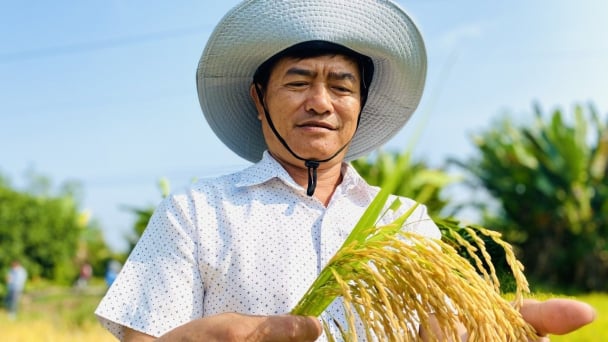
(VAN) Dong Thap farmers attained an average profit margin of 64% during the summer-autumn 2024 crop (first season), while An Giang and Kien Giang farmers followed with 56% and 54%, respectively.
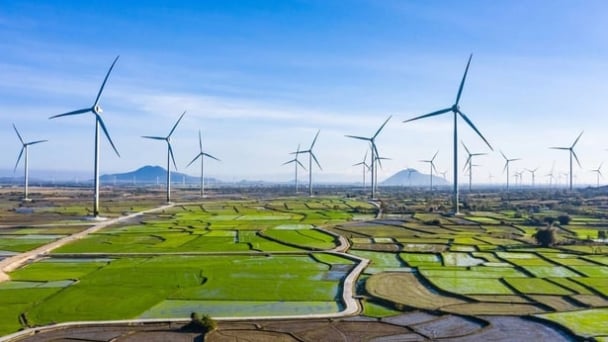
(VAN) As a doctoral student doing research on renewable energy and electrification at Harvard University, the author shares his musings on electricity, nature, and countryside memories.

(VAN) The decree on Extended Producer Responsibility (EPR) ensures transparent management and disbursement of support funds, avoiding the creation of a “give-and-take” mechanism.

(VAN) Hue City rigorously enforces regulations regarding marine fishing and resource exploitation, with a particular emphasis on the monitoring of fishing vessels to prevent illegal, unreported, and unregulated (IUU) fishing.